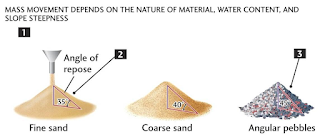6. Collecting the data:
In
dealing with any real life problem it is often found that data at hand are
inadequate, and hence, it becomes necessary to collect data that are
appropriate.
There
are several ways of collecting the appropriate data which differ considerably
in context of money costs, time and other resources at the disposal of the
researcher. Primary data can be collected either through experiment or through
survey.
If
the researcher conducts an experiment, he observes some quantitative
measurements, or the data, with the help of which he examines the truth
contained in his hypothesis.
But
in the case of a survey, data can be collected by any one or more of the
following ways:
(i) By observation: This method implies the collection of information by way
of investigator’s own observation, without interviewing the respondents. The
information obtained relates to what is currently happening and is not
complicated by either the past behaviour or future intentions or attitudes of
respondents. This method is no doubt an expensive method and the information
provided by this method is also very limited. As such this method is not
suitable in inquiries where large samples are concerned.
(ii) Through personal interview: The investigator follows a rigid procedure and seeks
answers to a set of pre-conceived questions through personal interviews. This
method of collecting data is usually carried out in a structured way where
output depends upon the ability of the interviewer to a large extent.
(iii) Through telephone interviews: This method of collecting information involves contacting
the respondents on telephone itself. This is not a very widely used method but
it plays an important role in industrial surveys in developed regions,
particularly, when the survey has to be accomplished in a very limited time.
(iv) By mailing of questionnaires: The researcher and the respondents do come in contact with
each other if this method of survey is adopted. Questionnaires are mailed to
the respondents with a request to return after completing the same. It is the
most extensively used method in various economic and business surveys. Before
applying this method, usually a Pilot Study for testing the questionnaire is conducted
which reveals the weaknesses, if any, of the questionnaire? Questionnaire to be
used must be prepared very carefully so that it may prove to be effective in
collecting the relevant information.
(v)
Through schedules: Under this method the enumerators are
appointed and given training. They are provided with schedules containing
relevant questions. These enumerators go to respondents with these schedules.
Data are collected by filling up the schedules by enumerators on the basis of
replies given by
respondents.
Much depends upon the capability of enumerators so far as this method is
concerned. Some occasional field checks on the work of the enumerators may
ensure sincere work. The researcher should select one of these methods of
collecting the data taking into consideration the nature of investigation,
objective and scope of the inquiry, financial resources, available time and the
desired degree of accuracy. Though he should pay attention to all these
factors but much depends upon the ability and experience of the researcher. In
this context Dr. A.L.Bowley very aptly remarks that in collection of
statistical data commonsense is the chief requisite and experiences the chief
teacher.
.jpg)



Comments
Post a Comment